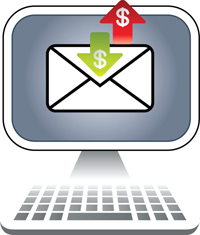
If ever there was a time for the e-mail team (or e-mail person, in the case of one-employee departments) to move beyond opens and click-through rates in measuring their programs’ performance, it’s now.
With most marketing and sales departments failing to meet their numbers, the e-mail list is looking like a mighty tasty target. Sending more mail to subscribers is easy and cheap, so the urge is to hammer away at the e-mail file.
E-mail often looks like a solution to the problem, says Arthur Middleton Hughes, senior strategist at e-mail service provider e-Dialog. “It is so inexpensive compared to other methods of reaching people and it also has the advantage of being personalized and interactive.”
While e-mail may, indeed, be one solution, hitting the file with more messages isn’t. Even though most e-mail managers know beating up the internal e-mail list isn’t wise, many can’t make their case in terms management can understand.
As a result, one of the most important pieces of information an e-mail manager should know is a key metric in database marketing: the lifetime value of an e-mail subscriber.
“You really have to know what the value of an e-mail subscriber is,” Hughes says. “The question then is, what do you do with that number once you get it?”
For one thing, he notes, e-mail managers can use the lifetime-value figure to argue for more aggressive e-mail-name-acquisition practices. These might include giving new registrants a $5-off coupon, or offering employees at retail locations monetary incentives to collect store customers’ e-mail addresses.
“If a subscriber is worth $30, you can afford to give away $5 to get a new subscriber,” says Hughes. Also, most e-mail subscribers are probably worth more than managers know, he notes.
“One of the biggest mistakes managers make is they measure the value of an e-mail only by online sales,” says Hughes. He argues that many marketers get four times the sales offline from e-mail than they do online.
Looking beyond LTV
Stephanie Miller, vice president of strategic services for deliverability consultancy Return Path, advises looking beyond some common e-mail metrics to get a clearer picture of an e-mail program’s performance. For example, a program’s unsubscribe rate, or the average number of people who opt-out of future mailings, is useful. But analyzing when people tend to opt out can reveal data upon which the marketer can act more intelligently, she says.
“You may find that people of a certain job type or a certain geography may tend to unsubscribe,” says Miller. “You may also find that people tend to unsubscribe when you send more than your weekly messages.”
Those are the types of things an e-mail manager should look at in order to make intelligent decisions, she says.
Another metric e-mail marketers should monitor is the spam complaint rate, or the number of people who hit the “report spam” button in their inbox. “A lot of marketers view complaints as very negative, but actually it’s one of the best sources of information we have,” Miller says.
“If you can take the feedback loop data and match it back to the subscriber, you can tell what subject line [the e-mail that drew the complaint carried]; you can tell how long they’ve been on your file; and you can tell the source [of the name],” she says. “Knowing who is complaining about what message is an incredible source of feedback.”
This way, she adds, “when management says: ‘Revenue is down; you have to send more e-mail,’ you can say: ‘Well, whenever we do that, our complaint rates go up, we can’t get our messages delivered to Yahoo, and our response rates go down. What I’d rather do is come up with a series of messages focused on this one segment on our list aimed at selling that new product we just launched.’”
Show them the money
The key to using metrics to drive best practices internally is to base arguments on revenue, says Miller.
“Everybody knows that just sending more e-mail is not a best practice, but unless you can come up with a solution that involves driving more revenue, you haven’t got a leg to stand on,” she says. “You have to speak in terms executives can understand.”
Likewise, you must know how much it costs to acquire an e-mail address, says Miller. This way, the e-mail manager can illustrate the effects of bad mailing practices.
“Even if you spend less than a dollar to acquire new customers, the math adds up fast,” says Miller. “Use this sum to help educate internal audiences who want to abuse the e-mail file with additional, irrelevant messages.”